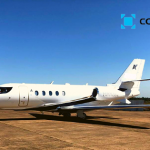Firing up our cylinders for the new year, we are putting things in motion with a look at the different fuels used for giving an aircraft propulsion. There are four major distinctions or categories of aviation fuel and today we are going to focus on just two of them: Jet Fuel, the most common of which are the kerosene based Jet A-1 and Jet A, and Jet B which is a kerosene-gasoline mixture.

Kerosene Based
When it comes to turbine engine based aircraft, Jet A-1 and Jet A are globally used. They are both a highly refined, light petroleum kerosene-type fuel. The flash point of Jet A-1 is 38 degrees Celsius and it must have a freezing point of -47 degrees Celsius or below. Jet A, which is typically only found in the United States, has a higher freezing point of -40 degrees Celsius or below. Additionally, these fuels have slightly different standards when produced for US or non-US consumption, one of which being the addition of a static dissipator additive (typically not found in US-based blends). This additive is designed to enhance safety measures by minimizing the hazardous effect of the static build up that occurs when jet fuel moves.
Other additives that may be blended in after the fuel refining process serve different purposes, ranging from helping to prevent deposit build-up in the turbine to controlling freezing points, and of course to prevent random sparking of the fuel. NATO military aircraft use a similar fuel but with an even higher amount of additives known as Jet Propellant 8 (JP-8), which is now the battlefield standard.
Wide Cut
Moving along to Jet B (a similar yet military grade fuel that is no longer in use is JP-4) we see two main differences when compared to Jet A-1 and Jet A. First off, Jet B is known as a wide-cut fuel which means it is a blend of kerosene and gasoline, roughly 35% and 65% respectively but this fluctuates. This causes a lower flash point of around 20 degrees Celsius, compared to the 38 degree flash point in Jet A-1. Along these lines, this also allows for a lower freezing point of -72 degrees Celsius, a full 25 degrees lower than Jet A-1. Because of this, Jet B is used to fly in regions of the world that are extremely cold.

Next week, we’ll be taking a gander at Avgas and Biokerosene blends. Don’t put your seats in the upright position just yet because this journey is still underway.




